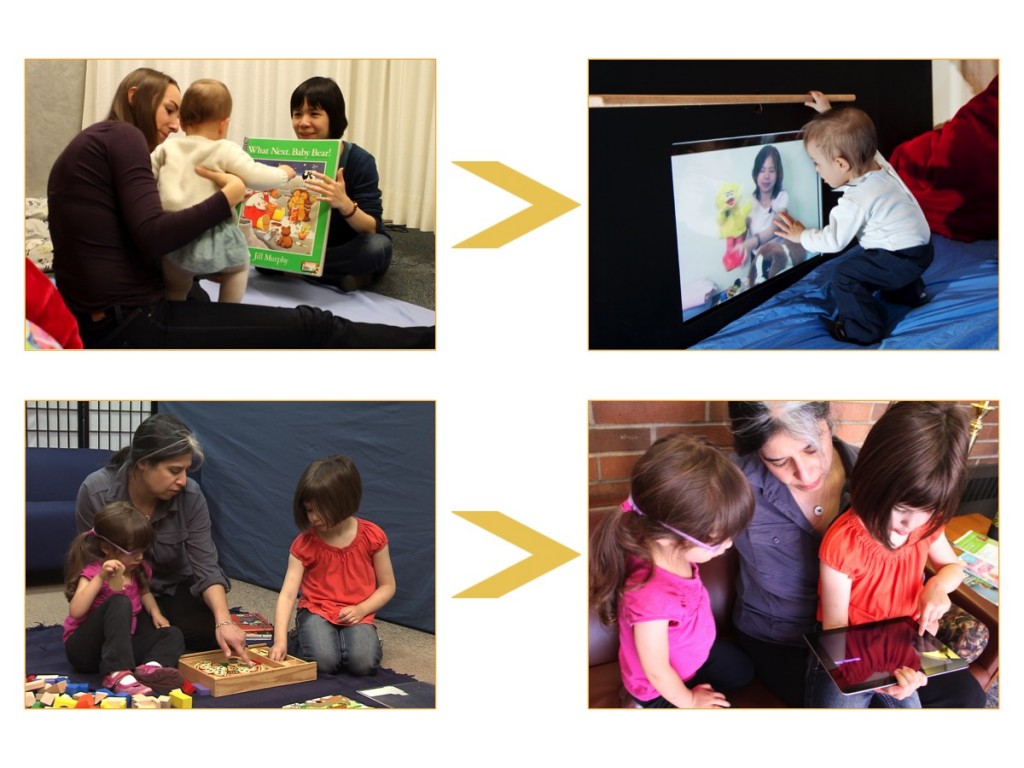
People are the key to children’s early development. Children can learn by individual exploration or observation, but there’s no substitute for human interaction! Babies learn best during face-to-face interactions.
For example, researchers found that interaction style affects how 9-month-olds learn sounds from foreign languages. Babies learned foreign sounds from a live interaction. But they did not learn the sounds from watching a video. Are you surprised by these results? Why do you think children learned from a live interaction but not through video?
One possibility is that face-to-face interactions allow turn taking. Adults can respond in real time to what the child is doing or saying. They might look where a child is looking, or label a new object. But when a child watches a video, the person on the screen cannot react to the child’s behavior or provide the same social cues that a live person can.
-
- Back-and-forth or contingent interactions
- exchanges in which a caregiver times their responses to a child’s behavior
- Imitation
- observing then reproducing, or copying, a behavior
- Infant-directed speech
- a special tone and style of speech used to talk to young children. It’s also called parentese.
- Scaffolding
- the support a caregiver provides a child to help them achieve more than they would be able to accomplish on their own